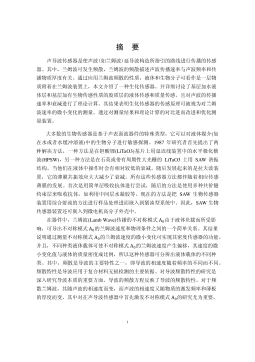银杏中银杏酸的脱除及制粉的研究
摘要银杏也叫白果,其性平,味苦,营养丰富,具有止喘咳、止腹泻、润肺益气、改善大脑功能、治疗脑供血不足,抗衰老等功效。但因银杏中含有银杏酸,而银杏酸具有免疫毒性、细胞毒性和致敏性等作用,并且其中银杏酸的含量>200mg/kg,高于国标要求的银杏酸含量≤5mg/kg,所以银杏不能多食。本文以微波为辅助手段,进行了对银杏中银杏酸的脱除研究,并优化了工艺参数;还进行了银杏喷雾干燥制粉实验研究,得到主要结论如下:研究了不同脱除方法、不同预泡时间及不同粉碎粒度对银杏中银杏酸脱除率的影响,并测定了实验所用银杏中银杏酸的平均总含量。实验发现微波辅助法和传统的索氏抽提方法相比较,虽然对银杏酸脱除的效果略差,但是...
相关推荐
-
10KV电网D-SCADA 系统信息采集与故障诊断研究与设计VIP免费

 2024-10-14 50
2024-10-14 50 -
方形吸顶散流器平送风等温射流特性研究VIP免费

 2025-01-09 12
2025-01-09 12 -
关于充液声导波传感器中频散兰姆波的研究VIP免费

 2025-01-09 19
2025-01-09 19 -
结合梁斜拉桥施工过程中考虑剪力滞影响的分析方法VIP免费

 2025-01-09 28
2025-01-09 28 -
空调房间热舒适性的数值模拟与实验研究VIP免费

 2025-01-09 9
2025-01-09 9 -
汽车前轮线控转向系统研究VIP免费

 2025-01-09 13
2025-01-09 13 -
输入分配型混合动力车辆动力系统控制策略研究VIP免费

 2025-01-09 9
2025-01-09 9 -
双馈风力发电系统的柔性并网控制研VIP免费

 2025-01-09 35
2025-01-09 35 -
污水处理厂污泥好氧堆肥发酵技术的试验研究VIP免费

 2025-01-09 10
2025-01-09 10 -
应用风室试验装置的风机性能VIP免费

 2025-01-09 12
2025-01-09 12
相关内容
-

汽车前轮线控转向系统研究
分类:高等教育资料
时间:2025-01-09
标签:无
格式:PDF
价格:15 积分
-

输入分配型混合动力车辆动力系统控制策略研究
分类:高等教育资料
时间:2025-01-09
标签:无
格式:PDF
价格:15 积分
-

双馈风力发电系统的柔性并网控制研
分类:高等教育资料
时间:2025-01-09
标签:无
格式:PDF
价格:15 积分
-

污水处理厂污泥好氧堆肥发酵技术的试验研究
分类:高等教育资料
时间:2025-01-09
标签:无
格式:PDF
价格:15 积分
-

应用风室试验装置的风机性能
分类:高等教育资料
时间:2025-01-09
标签:无
格式:PDF
价格:15 积分






